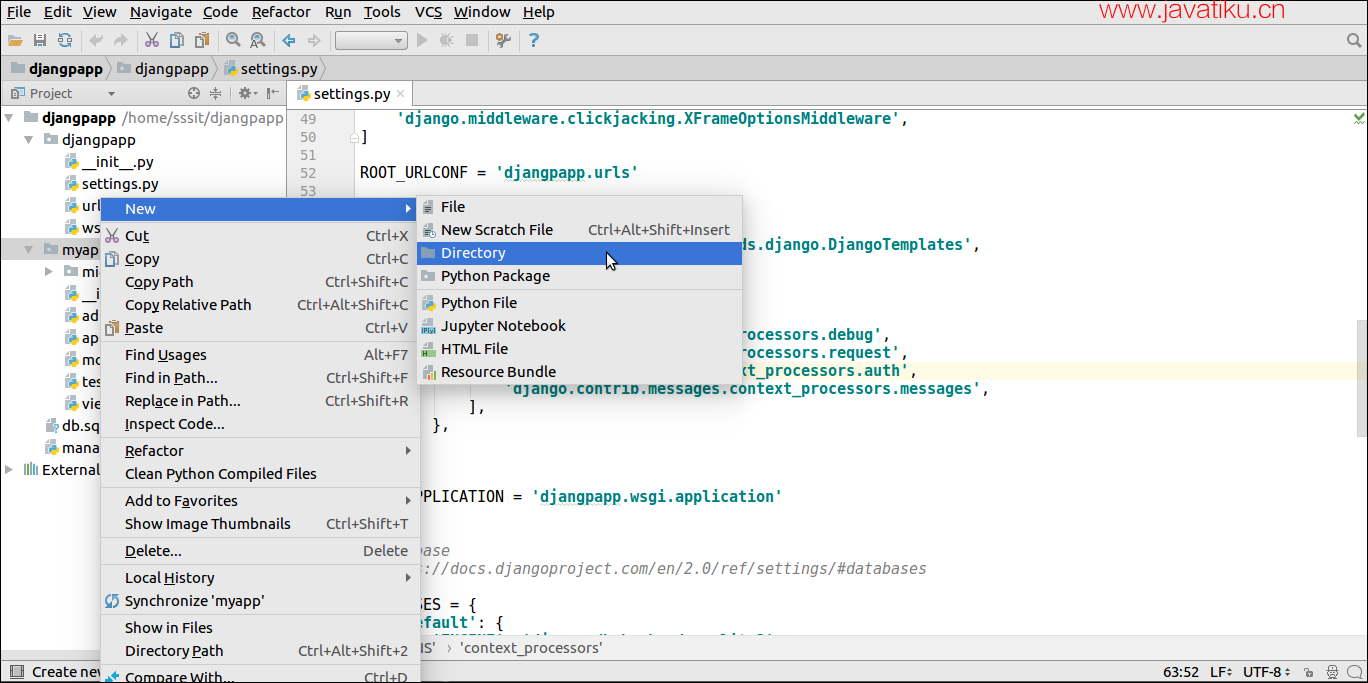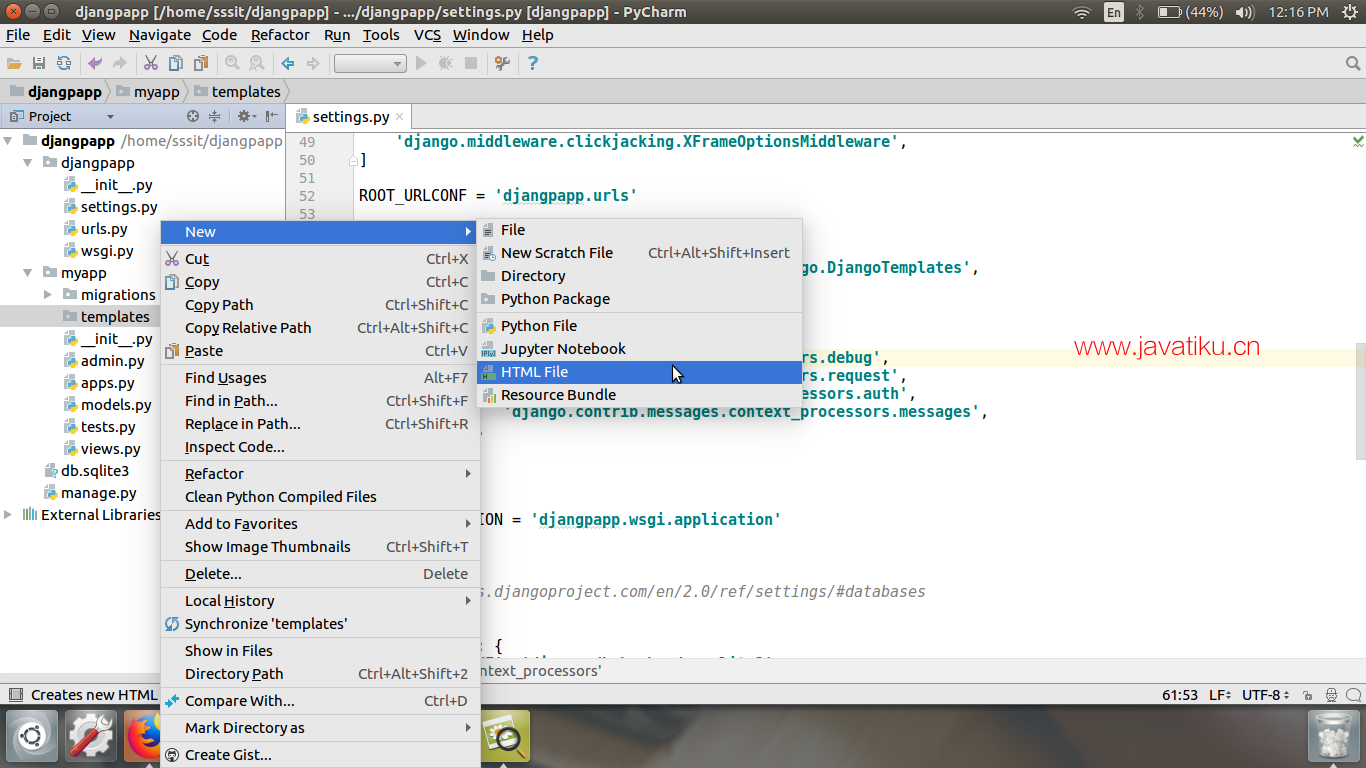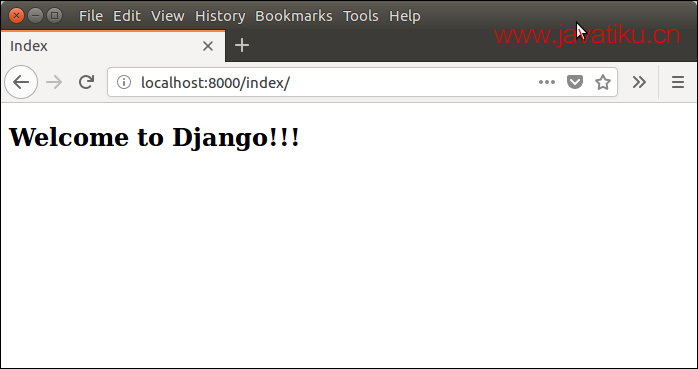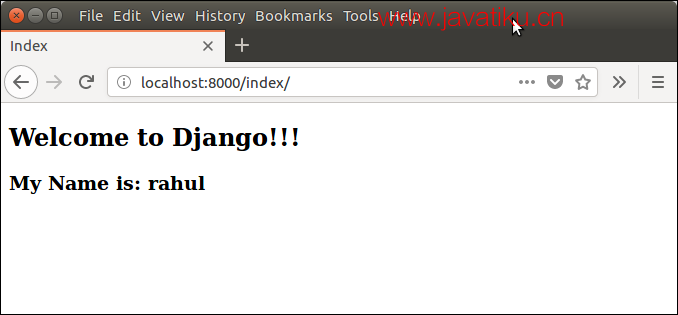Diango教程-Django 模板

Django 提供了一种使用其模板系统生成动态 HTML 页面的便捷方法。
模板由所需 HTML 输出的静态部分以及描述如何插入动态内容的一些特殊语法组成。
为什么选择 Django 模板?
在HTML文件中,我们不能编写Python代码,因为代码只能由Python解释器解释,而不是浏览器。我们知道HTML是一种静态标记语言,而Python是一种动态编程语言。
Django模板引擎用于将设计与Python代码分离,并允许我们构建动态网页。
Django 模板配置
要配置模板系统,我们必须在settings.py文件中提供一些条目。
TEMPLATES = [
{
'BACKEND': 'django.template.backends.django.DjangoTemplates',
'DIRS': [os.path.join(BASE_DIR,'templates')],
'APP_DIRS': True,
'OPTIONS': {
'context_processors': [
'django.template.context_processors.debug',
'django.template.context_processors.request',
'django.contrib.auth.context_processors.auth',
'django.contrib.messages.context_processors.messages',
],
},
},
] 在这里,我们提到我们的模板目录名称是templates。默认情况下,DjangoTemplates在每个 INSTALLED_APPS 中查找templates子目录。
Django 模板简单示例
首先,在项目应用程序中创建一个目录模板,如下所示。

之后在创建的文件夹中创建一个模板index.html 。

我们的模板index.html包含以下代码。
// 索引.html
<!DOCTYPE html>
<html lang="en">
<head>
<meta charset="UTF-8">
<title>Index</title>
</head>
<body>
<h2>Welcome to Django!!!</h2>
</body>
</html> 加载模板
要加载模板,请像下面一样调用 get_template() 方法并传递模板名称。
//视图.py
from django.shortcuts import render
#importing loading from django template
from django.template import loader
# Create your views here.
from django.http import HttpResponse
def index(request):
template = loader.get_template('index.html') # getting our template
return HttpResponse(template.render()) # rendering the template in HttpResponse 设置 URL 以从浏览器访问模板。
//urls.py
path('index/', views.index), 在 INSTALLED_APPS 中注册应用程序
INSTALLED_APPS = [
'django.contrib.admin',
'django.contrib.auth',
'django.contrib.contenttypes',
'django.contrib.sessions',
'django.contrib.messages',
'django.contrib.staticfiles',
'myapp'
] 运行服务器
执行以下命令,并在浏览器中输入localhost:8000/index访问模板。
$ python3 manage.py runserver 
Django 模板语言
Django 模板使用自己的语法来处理变量、标签、表达式等。模板是使用上下文来呈现的,该上下文用于在网页上获取值。请参阅示例。
变量
与上下文关联的变量可以通过 {{}}(双花括号)访问。例如,变量名称值为 rahul。然后以下语句将用其值替换名称。
My name is {{name}}.
My name is rahul Django 变量示例
//视图.py
from django.shortcuts import render
#importing loading from django template
from django.template import loader
# Create your views here.
from django.http import HttpResponse
def index(request):
template = loader.get_template('index.html') #获取我们的模板
name = {
'student':'rahul'
}
return HttpResponse(template.render(name)) #在 HttpResponse中渲染模板 //索引.html
<!DOCTYPE html>
<html lang="en">
<head>
<meta charset="UTF-8">
<title>Index</title>
</head>
<body>
<h2>Welcome to Django!!!</h2>
<h3>My Name is: {{ student }}</h3>
</body>
</html> 输出:

标签
在模板中,标签在渲染过程中提供任意逻辑。例如,标签可以输出内容、用作控制结构(例如“if”语句或“for”循环)、从数据库中获取内容等。
标签由 {% %} 大括号括起来。例如。
{% csrf_token %}
{% if user.is_authenticated %}
Hello, {{ user.username }}.
{% endif %} 


